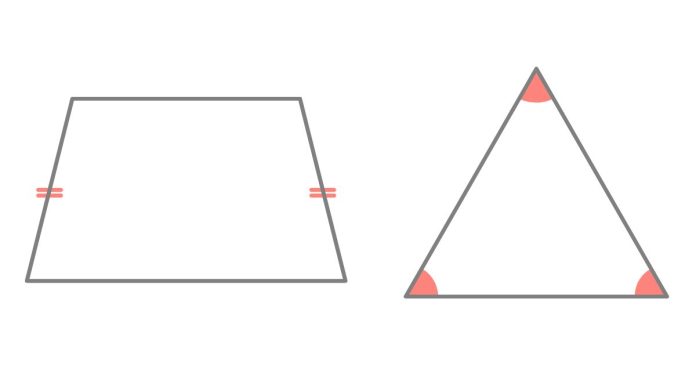Which Shapes Have Parallel Sides?
In geometry, shapes with parallel sides are those in which two sides run in the same direction and never meet, no matter how far they are extended. Here’s a breakdown of common shapes that have parallel sides:
1. Parallelogram
- A parallelogram is a quadrilateral where both pairs of opposite sides are parallel. This means that each pair of opposite sides will never intersect. Not only that, but opposite sides are also equal in length. Examples include rectangles, squares, and rhombuses (a type of parallelogram).
2. Rectangle
- A rectangle is a special type of parallelogram where all four angles are right angles (90 degrees). A rectangle has two pairs of parallel sides: the opposite sides are equal in length and parallel to each other.
3. Square
- A square is another special type of parallelogram. Like a rectangle, it has two pairs of parallel sides. However, in a square, all four sides are of equal length, and all four angles are 90 degrees.
4. Rhombus
- A rhombus is a type of parallelogram where all sides are of equal length, but the angles are not necessarily 90 degrees. Like all parallelograms, the opposite sides of a rhombus are parallel.
5. Trapezoid (or Trapezium)
- A trapezoid (or trapezium in British English) has one pair of parallel sides. The other pair of sides is non-parallel, but the parallel sides provide stability and a distinct shape. Trapezoids can come in many variations, but the defining feature is always that one pair of sides is parallel.
6. Rectangle
- Similar to the square, a rectangle has two pairs of parallel sides. The difference is that while a square has equal sides, the sides of a rectangle can be of different lengths.
7. Parallelogram
- A parallelogram is any quadrilateral where opposite sides are parallel. This can be any slanted, angled form, not necessarily with right angles.
8. Isosceles Trapezoid
- An isosceles trapezoid is a trapezoid where the non-parallel sides (legs) are equal in length, while the parallel sides are of different lengths. Like all trapezoids, it has one pair of parallel sides.
9. Other Types of Quadrilaterals
- Rhombus: Another form of parallelogram where sides are equal but angles are oblique.
- Rectangular Prism: In 3D geometry, faces that are rectangles have parallel sides.
Shapes with No Parallel Sides
- Scalene Triangle: No parallel sides.
- Irregular Quadrilaterals: In shapes like the kite or other irregular quadrilaterals, no sides are parallel.
Conclusion
Shapes that have parallel sides include basic geometric figures like parallelograms, rectangles, squares, rhombuses, and trapezoids. Whether you’re working with 2D or 3D shapes, parallel sides play a key role in the properties and symmetry of these figures.
Related posts:
- What does ringing in the ears mean spiritually?
- What Colors Do Blue and Green Make?
- How Long Does Raw Chicken Really Last in the Fridge?
- What are some amazing and memorable Valentine’s Day ideas that will leave a lasting impression?
- What is the definition of ‘friends with benefits?
- What is the difference between a bachelor’s and a degree?


